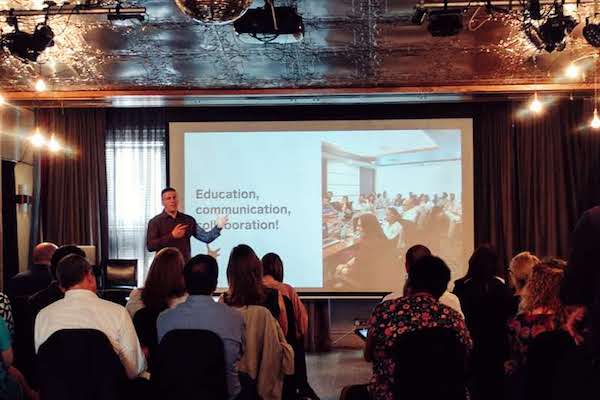
How do you begin?
First you need to diagnose where you currently are and define where you want to be. Our digital maturity tool Sonar is a great place to start. There are often huge differences in the digital mindset, maturity and capability of the various teams or markets within an organisation.Once you’ve identified the priorities in your business, start with something that can be easily measured and benchmarked. Measureable milestones provide tangible proof that progress is happening – both for your team and the wider organisation – and encourage buy-in for broader, more complex projects.For example at Tata Communications Craig began by redesigning and developing one area of the website to be completely customer-first and data-led. This was a tangible change that quickly delivered results, making it easier to communicate the value of the larger digital capability program to the rest of the organisation.Leaders must have a digital mindset
Martin explained that Forrester’s research has shown those in charge of transformation can sometimes be the blockers to culture change.When tasked with digital transformation the majority (57%) of companies put CIO’s in charge. These CIOs often take a product-led approach by implementing expensive technology solutions – and little else. Around 20% of companies turn to the CMO, who usually defines a digital marketing strategy with no connection to the wider organisation. Whatever their role, these leaders must begin by fundamentally understanding the digital needs of their organisation.A strong digital mindset at the most senior level is key to developing a digital culture that successfully guides the business. Martin shared findings demonstrating that CEO-led transformation tends to be more successful than other C-suite led programs.Leaders must be confident enough to accept that they don’t have all the answers. At Brilliant Noise we specialise in fostering strong digital mindsets and leadership skills whilst building digital capability organisation wide.You need to digitise your business strategy, not just your marketing strategy
Forrester have found that adding short-term, bolt-on digital solutions to existing business practices is a mistake often made by senior leaders. Going beyond this approach to digital requires considering how you can rewire the business to improve not only customer experience, but business operations. Martin also highlighted the need to consider the digital ecosystem – how digital resources are shared across the organisation for common goals – and how the organisation approaches innovation.How can you change your ways of working to take advantage of new and emerging resources and technology? Critically, this doesn’t mean using new technology just because it’s the latest fad. It’s seeing the potential of technology to fit into, and positively transform your ways of working. Strong, organisation-wide digital capabilities will empower employees and unlock the potential of the organisation.Education. Communication. Collaboration.
Education and communication are absolutely essential to organisational change. Inspiring internal communications are key to building skills and breathing life into organisation-wide transformation projects.Uniting siloed teams around the needs of the customer is key. Collaboration, knowledge sharing and greater organisational alignment have real business benefits.Craig saw that his digital team found it difficult to say no to requests from the product teams, who had high-pace and high-volume targets to achieve. This focus on output rather than outcomes meant that the organisational culture was product-, not customer-led.He finds that simple things like having teams come together to map user journeys and take part in joint workshops makes a massive difference in breaking down silos and becoming customer-led. You could even take it a step further by holding informal meetings with small groups of colleagues over a coffee to ask the ‘dumb’ questions without judgement. Simple steps like these can have a real positive impact on the transformation process.How to drive a successful change programme
- Diagnose where you are and the journey that the organisation needs to take. Once you know where you are and see where you want to be, the scale of the change becomes much easier to manage.
- Use milestones to measure incremental success. This will keep driving the momentum and enthusiasm for change.
- Strong leadership and digital mindset are key. Developing an organisation-wide digital culture requires inspiration and vision from senior leadership.
- Company-wide digital capability is essential to successful change. In the connected age, the whole organisation needs to be empowered to make well-informed, effective decisions at pace. Avoid using digital bolt-ons for short-term results.
- Communication and collaboration should be encouraged. Simply enabling conversation and knowledge sharing between teams speeds up the change programme and encourages collaboration.
‘The most effective way to do it is to do it.’
-Amelia Earhart
To talk to us about your digital transformation challenges get in touch.